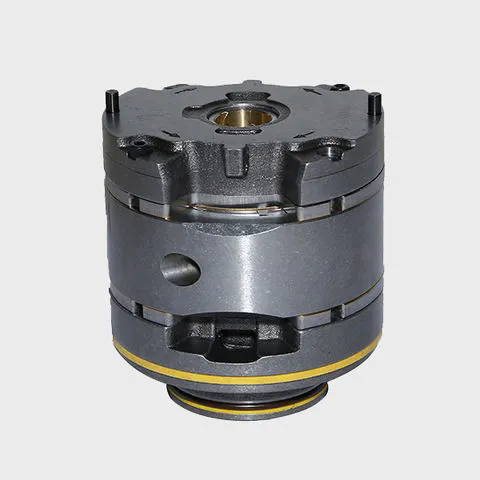Understanding Hydraulic Cylinders: The Backbone of Heavy Machinery
2025-01-24
Hydraulic cylinders are essential components in various machines and systems, particularly in industries that rely on heavy-duty equipment. From construction and agriculture to manufacturing and automotive industries, hydraulic cylinders power numerous applications by converting fluid pressure into mechanical force. In this blog, we’ll explore the fundamental principles, uses, and benefits of hydraulic cylinders.
What is a Hydraulic Cylinder?
A hydraulic cylinder is a mechanical actuator used to provide a unidirectional force through a linear stroke. It is a part of the hydraulic system, which operates based on the principles of fluid dynamics. The basic function of the cylinder is to generate movement using hydraulic fluid, typically oil, which is pressurized and directed into the cylinder.
In simple terms, when hydraulic fluid is pumped into the cylinder, it pushes a piston inside. The piston moves in a linear direction, either extending or retracting, depending on the fluid pressure. This movement generates force, which can be harnessed to lift, push, pull, or perform other mechanical tasks.
Components of a Hydraulic Cylinder
Understanding the different parts that make up a hydraulic cylinder is crucial for grasping how they work. Here are the main components:
1. Cylinder Barrel: This is the outer casing that houses the piston and hydraulic fluid. It's typically made of high-strength steel to withstand the pressure and force exerted inside.
2. Piston: The piston is a vital part of the cylinder. It separates the two chambers inside the barrel and moves back and forth under the force of the hydraulic fluid.
3. Rod: The rod connects to the piston and extends out of the cylinder. It’s responsible for transmitting the force generated by the piston to perform the desired task.
4. End Caps: The end caps seal the openings of the cylinder and provide a mounting point for the cylinder to be attached to machinery.
5. Seals: Seals are crucial in preventing hydraulic fluid from leaking out of the cylinder. They also protect the internal components from contaminants, such as dirt or debris.
6. Port: The port is where hydraulic fluid enters and exits the cylinder. These ports are connected to hoses or pipes that supply and return the fluid.
How Do Hydraulic Cylinders Work?
Hydraulic cylinders operate based on basic principles of fluid mechanics. Here's a simplified version of how they work:
1. Pressure Application: When hydraulic fluid enters the cylinder, it enters one side of the piston. The pressure of the fluid pushes the piston to move, creating a force that can lift or move heavy objects.
2. Return Stroke: Once the fluid is released or redirected, the piston retracts. The return stroke can happen using a spring or by utilizing the pressure of the hydraulic fluid itself.
3. Force Generation: The amount of force a hydraulic cylinder can generate depends on the size of the piston, the pressure of the fluid, and the design of the cylinder. Larger pistons with higher fluid pressure result in greater force generation.
Applications of Hydraulic Cylinders
Hydraulic cylinders are incredibly versatile and can be found in many different industries and machines. Here are some common uses:
1. Construction Equipment: Hydraulic cylinders are commonly used in cranes, excavators, bulldozers, and backhoes to lift, dig, and move heavy materials.
2. Agricultural Machinery: Tractors, harvesters, and plows use hydraulic cylinders to move various parts such as blades, arms, and lifting systems.
3. Manufacturing and Industrial Machinery: Hydraulic cylinders are used in presses, lifts, and various automation equipment to move heavy parts or materials.
4. Automotive Applications: They are used in car lifts, shock absorbers, and steering systems.
5. Aerospace: Aircraft use hydraulic cylinders for controlling flaps, landing gear, and brakes.
Advantages of Hydraulic Cylinders
Hydraulic cylinders offer several advantages that make them the preferred choice for many applications:
1. High Power-to-Weight Ratio: Hydraulic cylinders are capable of generating significant force relative to their size, making them efficient for heavy-duty applications.
2. Precise Control: Hydraulic systems allow for fine-tuned control of the cylinder’s movement, which is essential in applications that require precise actions, such as in robotics or manufacturing.
3. Smooth and Steady Motion: The hydraulic fluid allows for smooth, steady motion, which reduces wear and tear on the components compared to mechanical systems.
4. Flexibility: Hydraulic cylinders can be used in various orientations—horizontal, vertical, or angled—providing great flexibility in machine design.
5. Compact and Powerful: Hydraulic cylinders can be designed to fit into compact spaces while still providing high levels of force, making them ideal for machines with space constraints.
Maintenance and Care
Like any mechanical component, hydraulic cylinders require regular maintenance to ensure smooth operation and longevity. Here are some tips for maintaining hydraulic cylinders:
1. Check for Leaks: Regularly inspect the cylinder for any signs of fluid leakage, which could indicate a problem with the seals or other components.
2. Cleanliness: Keep the cylinder and surrounding area free from dirt and debris, as contamination can cause premature wear and affect the performance of the system.
3. Monitor Fluid Levels: Ensure that the hydraulic fluid is at the correct level and quality. Low or dirty fluid can cause the system to fail or operate inefficiently.
4. Inspect Seals: Check seals and gaskets regularly for signs of wear or damage. Replacing worn seals will prevent fluid leaks and maintain system pressure.
5. Lubrication: Proper lubrication of moving parts is essential for reducing friction and extending the lifespan of the cylinder.
Conclusion
Hydraulic cylinders play a pivotal role in numerous industries, offering high efficiency, power, and versatility. Their ability to generate significant force with precision makes them indispensable in everything from construction equipment to aerospace applications. By understanding the key components and benefits of hydraulic cylinders, businesses can maximize the efficiency and longevity of their machinery, ensuring smooth operations and reducing downtime.
Whether you're designing a new machine or maintaining an existing one, hydraulic cylinders will undoubtedly remain a critical part of modern industry for years to come.



